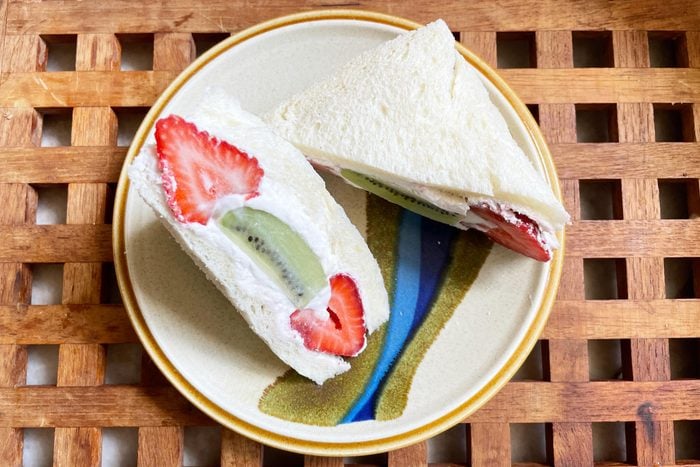It’s almost unfair to compare a classic PB&J to this Japanese fruit sandwich. It’s made with slices of fluffy Japanese milk bread, whipped cream and fresh fruit, so it’s honestly more “dessert” than sandwich. And like other Japanese desserts, the texture is cloud-like and delicate.
What Is a ‘Fruit Sando’?
The word “sando” is short for sandwich. In Japan, fruit sandos are found in hip patisseries as well as at corner convenience stores, wrapped in a clear plastic to reveal the delicate layers. 7-Eleven in Tokyo is where I had my first fruit sando, made with fluffy milk bread, light whipped cream and fresh strawberries. It reminded me of the flavors of strawberry shortcake or angel food cake with fresh berries, but with the novelty of a convenience store Twinkie.
It also gave me flashbacks to the marshmallow fluff sandwiches my friends and I would make in middle school, though a fruit sando feels slightly healthier than that!
In the U.S., it’s harder to find a store-bought Japanese fruit sandwich. But the good news is, they’re very easy to make at home.
Japanese Fruit Sandwich Recipe
 Megan Barrie for Taste of home
Megan Barrie for Taste of home
This recipe makes 2 sandwiches—enough to feed 4 people.
Ingredients
- 4 slices milk bread
- 1 cup heavy whipping cream, chilled
- 3 tablespoons sugar
- 1 teaspoon vanilla extract
- 8 strawberries
- 1 kiwi
Editor’s Tip: While our recipe has you make whipped cream from scratch, there’s no reason you can’t use whipped topping to assemble each fruit sandwich even faster.
Directions
Step 1: Prep the fruit
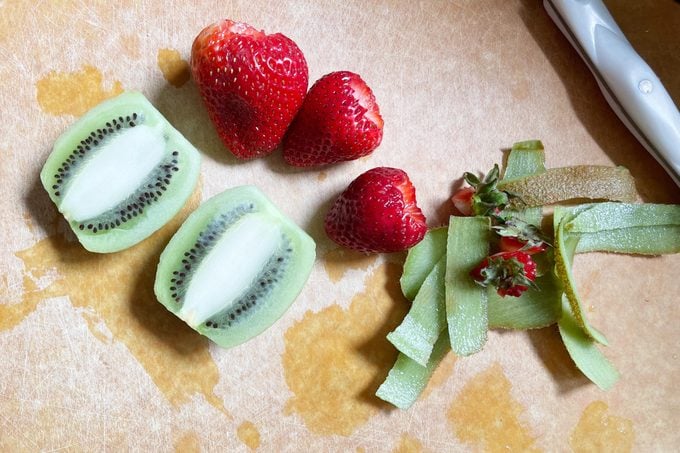 Megan Barrie for Taste of home
Megan Barrie for Taste of home
Wash the strawberries and pat dry, being sure to remove the stem. Peel the kiwi and slice in half lengthwise.
Step 2: Whip the cream
 Megan Barrie for Taste of home
Megan Barrie for Taste of home
Remove heavy whipping cream from the fridge and pour 1 cup into a medium bowl with high sides. It’s important that the cream is cold to help you get the right texture.
Using a whisk or handheld mixer on medium speed, whip until the cream forms bubbles and begins to thicken. Once you have soft peaks, add in sugar and vanilla extract and mix on medium until firm peaks form. Taste and adjust the sugar as needed. Be careful not to overwhip, as that can make butter!
Step 3: Assemble the fruit sando
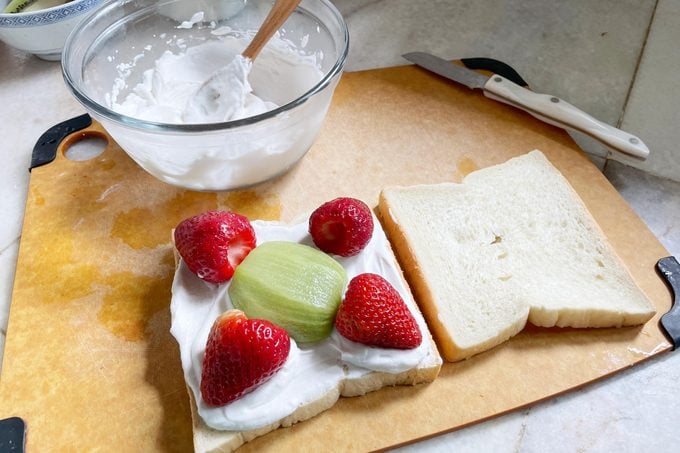 Megan Barrie for Taste of home
Megan Barrie for Taste of home
Spread an even layer of about 1/4 of the whipped cream on a slice of milk bread.
Then, place four whole strawberries and half a kiwi on the bread to fill the slice. Using another 1/4 of the whipped cream, top fruit so it’s fully covered, then place a second slice of bread on top and lightly press the sandwich together.
Repeat to make the second sandwich.
Step 4: Wrap and chill
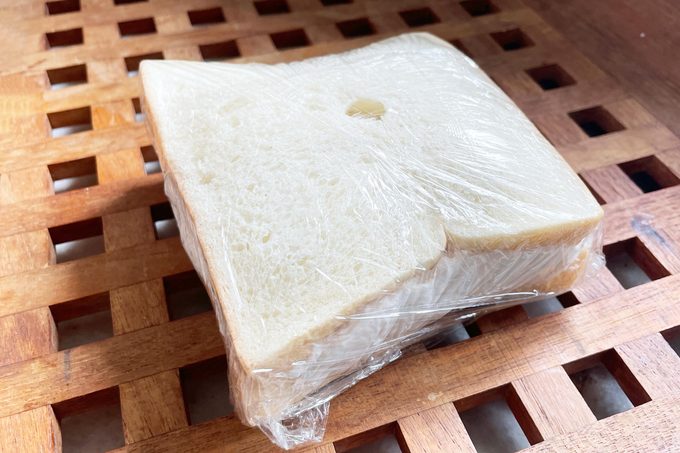 Megan Barrie for Taste of home
Megan Barrie for Taste of home
Firmly cover each sandwich in plastic wrap, being careful to note where you’d like to slice the bread for nice cross-sections. Place the sandwich in the fridge to chill for 10-30 minutes. You can skip this step if you’re hungry, but for clean layers, it’s best to wrap and chill.
Remove the fruit sandos from the fridge. Slice each one at an angle while still in the plastic wrap. You can then remove the plastic and slice off the crusts for a clean, finished look.
FAQs About Fruit Sandos
Do I need to use milk bread?
If you can’t seem to find milk bread, use Hawaiian bread or Wonder Bread. Wonder Bread won’t give you the same thick fluffiness of milk bread, and Hawaiian bread will be a bit eggy, but those types of bread tend to be in the average supermarket, which means you don’t have to make an extra stop.
You can also bake the Japanese milk bread from scratch, but that’s a baking project to tackle on a weekend.
Can I make this recipe dairy-free?
Yes! This recipe works great with coconut cream. Rather than use 1 cup of heavy whipping cream, use coconut cream (not coconut milk) and refrigerate it before you start. When you open the can, scrape the coconut cream solids into your measuring cup first, and then add the coconut milk liquid. This thick cream will whip up nicely. Use the same ratio of sugar and vanilla extract, and follow the same directions when whipping the cream.
Be sure to look for dairy-free bread, too.
Is this a sandwich to share?
Yes, portion-wise each sandwich can be sliced into two or even four wedges for friends and family to enjoy with you.
Japanese Recipes to Make at Home
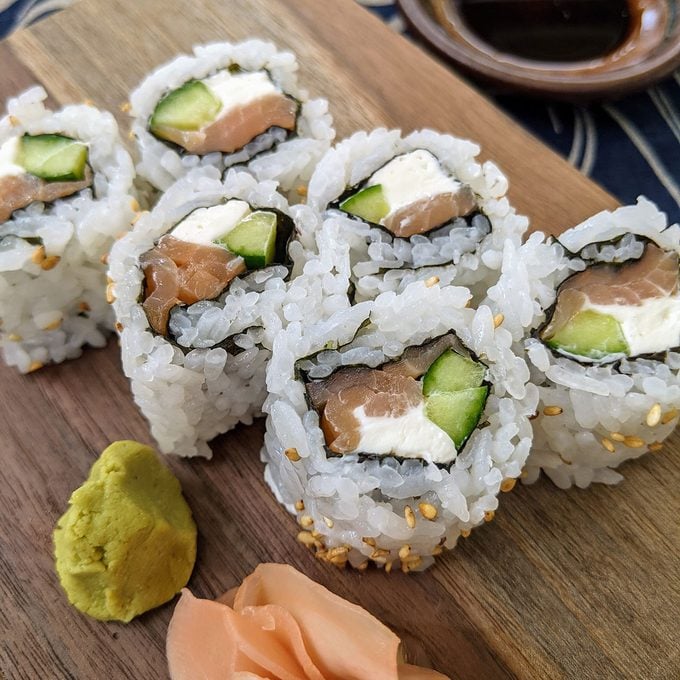 Koshiki Smith for Taste of Home
Koshiki Smith for Taste of Home
Sushi
From maki rolls filled with vegetables to fish-topped nigiri, there are a variety of sushi types that can be made at home without special equipment. You can make rolls with
sushi rice, nori (dried seaweed) and fresh or pickled vegetables. There are infinite flavor combinations for rolls, but one with an American twist is
Philly maki, made with cream cheese, smoked salmon and cucumber.
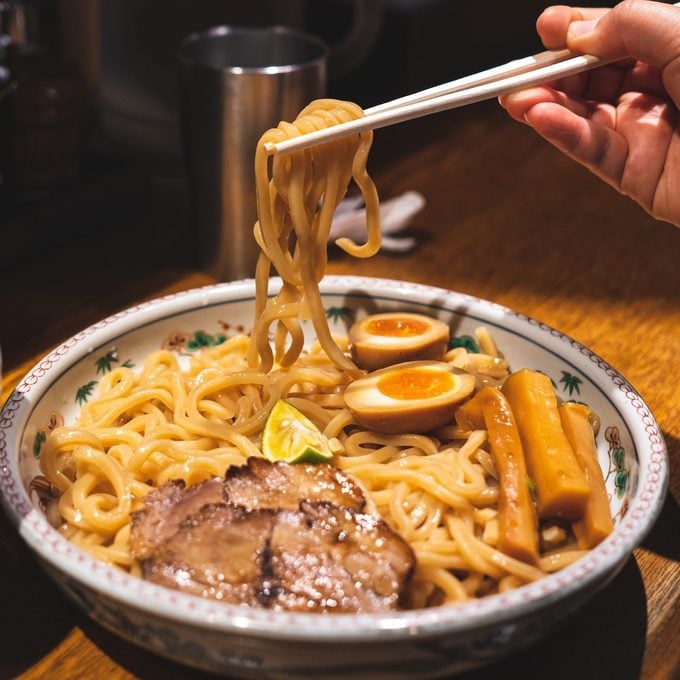 Natthawat/Getty Images
Natthawat/Getty Images
Tsukemen
Tsukemen , also known as "dipping ramen," consists of cold noodles served alongside a bowl of warm stock for dipping. You can
make tsukemen at home by cooking premade ramen noodles and chilling them, then topping with pork, spinach, a poached egg, corn, scallions and sesame seeds. Pair with a flavorful broth for dipping and you have a refreshing Japanese meal.
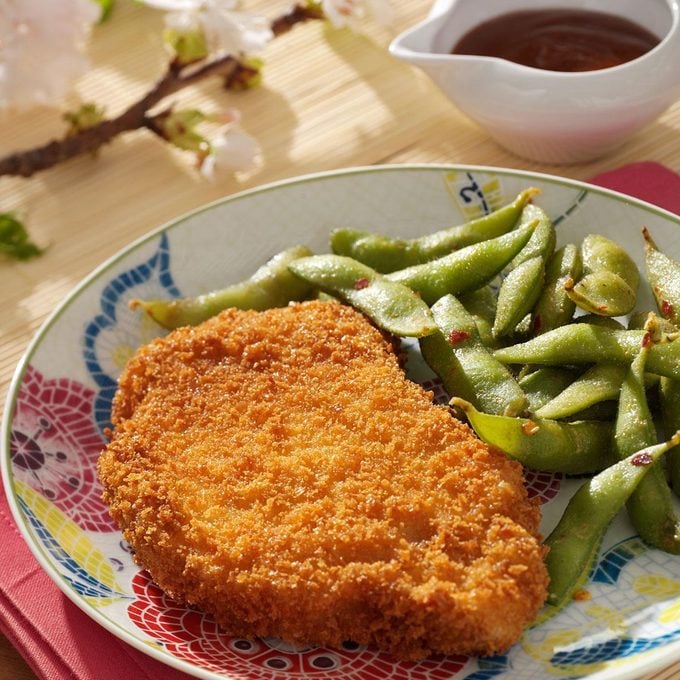 taste of home
taste of home
Tonkatsu
Tonkatsu is a juicy, crispy pork cutlet that's simple and quick to make at home. It's like a Japanese version of chicken-fried steak! Tonkatsu can come together in about 30 minutes by dredging a pork cutlet in an egg batter and panko bread crumbs and frying in oil. In our
tonkatsu recipe, the pork pairs nicely with a drizzle of tangy sauce. If you want to try another Japanese chicken recipe, cook up this
chicken katsu recipe that's gone viral on TikTok.
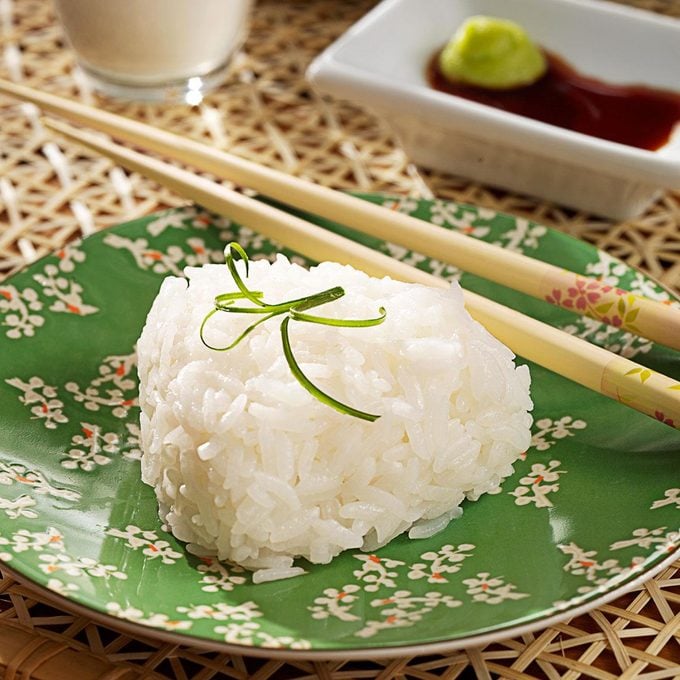 taste of home
taste of home
Onigiri
These rice balls are a lunch box item in Japan. Traditional fillings for
onigiri include salted salmon, pickled plum, bonito flakes and kombu seaweed. Before the advent of refrigeration, these salty and sour fillings acted as natural preservatives for the rice. However, you can fill onigiri with pretty much anything—even bits of last night's Japanese takeout. Our Test Kitchen's
onigiri recipe features tuna and a touch of wasabi.
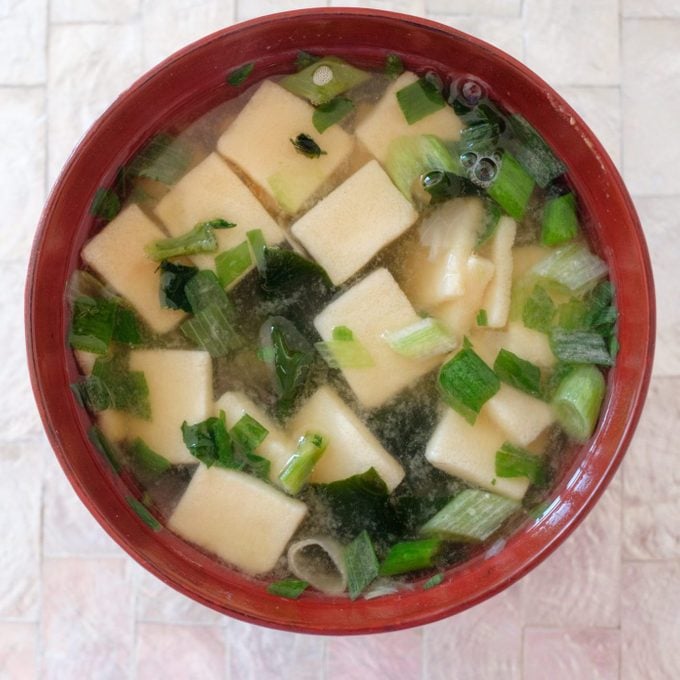 Keiko Iwabuchi/Getty Images
Keiko Iwabuchi/Getty Images
Miso Soup
Chances are you've had miso soup as an appetizer before, but perhaps never thought to make it at home. It's a unique combination of miso paste (made from fermented soybeans) and dashi (made from dried bonito flakes and kelp) with fresh tofu, green onion and seaweed. For a simple homemade version, out this
miso soup recipe. It only takes 20 minutes to cook!
 Megan Barrie for Taste of Home
Megan Barrie for Taste of Home
Yakisoba
Yakisoba is a popular noodle dish from Japan characterized by its chewy noodles, vegetables and tangy sauce. It works great as a simple lunch and can be easily cooked ahead and packed in a bento box. Even better, this highly adaptable dish can be customized in so many ways. Learn
how to make yakisoba at home.
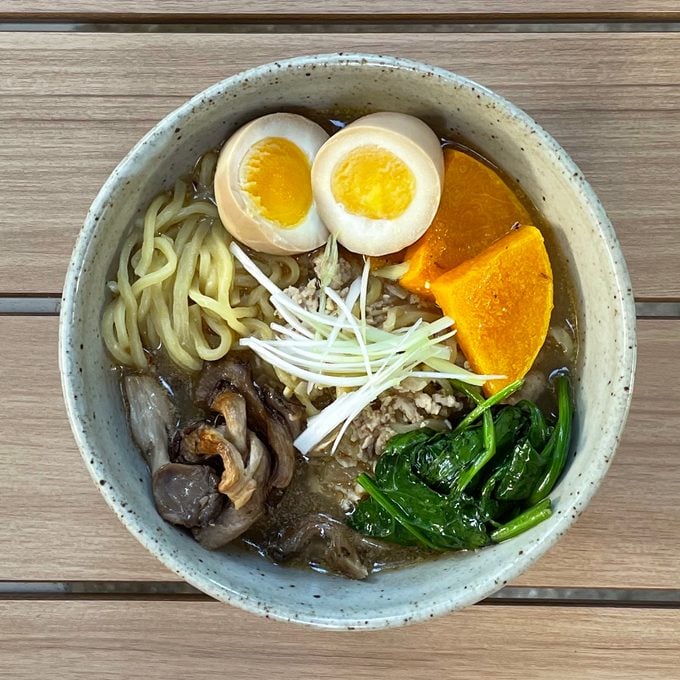 Kristin Eriko Posner for Taste of Home
Kristin Eriko Posner for Taste of Home
Ramen
Making
ramen from scratch can be a full day affair, with handmade noodles, stewed broth and slow-roasted meat. It's a labor of love and thoroughly enjoyed on a cold day, but you can also pick and choose which elements to devote your time to. Whether you crave a clear
shoyu (soy sauce) or
shio (salt) based broth, or a creamy miso (fermented soy bean) broth, homemade ramen will impress. Choose your toppings, like broccoli, corn, mushroom and eggs, to build the perfect bowl.
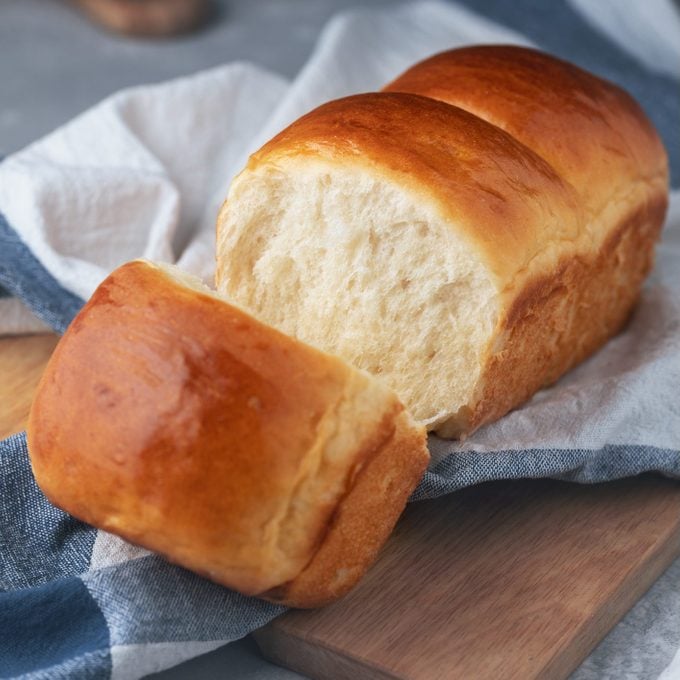 Elena Ivanova/Getty Images
Elena Ivanova/Getty Images
Japanese Milk Bread
Soft, pillowy
Japanese milk bread takes all day to make, but it's well worth the effort. The secret to its texture is the addition of
tangzhong, a flour-based roux starter. Enjoy a slice of milk bread on its own, use it for sandwich bread (perhaps paired with tonkatsu) or make it into a dessert-like bread pudding.
 Taste of Home
Taste of Home
Japanese Cucumber Salad
Japanese food is often served with pickled vegetables like cucumbers, daikon or radishes for crunch.
Cucumber salad (known as
sunomono) is an easy dish to make and enjoy throughout the week. Unlike other salads that wilt and get funky in the fridge, cucumber salad only benefits from sitting in the vinegar, sesame and ginger dressing for a few days.
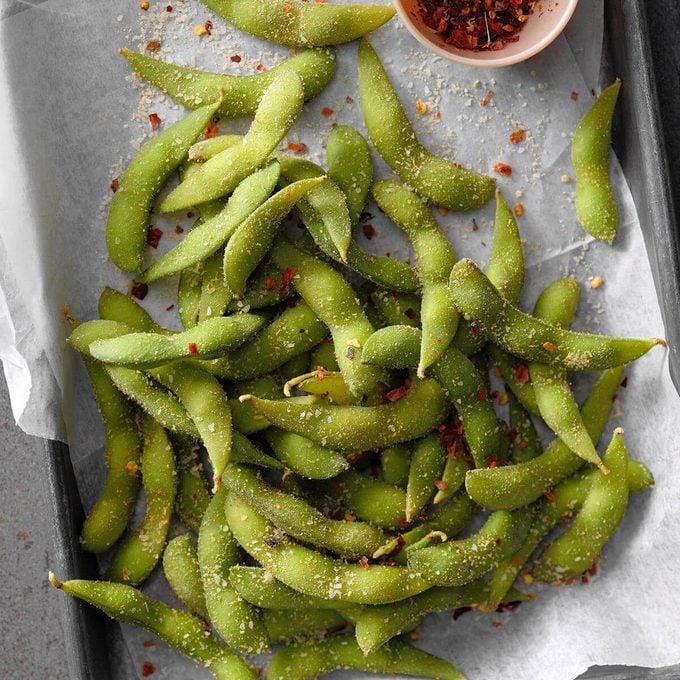 TMB Studio
TMB Studio
Spicy Edamame
Boiled and lightly salted, edamame can be prepared quickly and seasoned with a pinch of salt—or turn it into
spicy edamame with red pepper flakes and garlic. The green pods are often served as a complementary snack at a Japanese restaurant and might seem like something you wouldn't think to make at home. But edamame are easily found preboiled and ready to eat at grocery stores like Trader Joe's.
 Taste of Home
Taste of Home
Japanese Curry
Many cultures have versions of
curry. Japan's skews rich and sweet, with a dark roux. Traditional
Japanese curry includes pieces of beef, potato, carrot and onion and is served with steamed rice. Though you can make the curry roux from scratch, you can also buy bricks of Japanese curry that you add to water for a quicker meal.
 Irina Marwan/Getty Images
Irina Marwan/Getty Images
Japanese Pancakes
Fluffy Japanese pancakes are part pancake, part souffle. They're set apart by their height and custard-like flavor. These pancakes are made with most of the same ingredients as buttermilk pancakes, like eggs, sugar, flour and baking soda, but involve one important step which requires a bit more patience: whipping the egg whites.
 Edamame and Soba Noodle Bowl Recipe photo by Taste of Home
Edamame and Soba Noodle Bowl Recipe photo by Taste of Home
Soba Noodles
Made from buckwheat flour, soba noodles are a quick-cooking noodle that's easy to turn into a healthy lunch or dinner. They can be enjoyed chilled with dipping sauce (similar to tsukemen), with wasabi and green onion, or prepared with vegetables and protein as a
chilled soba noodle bowl.
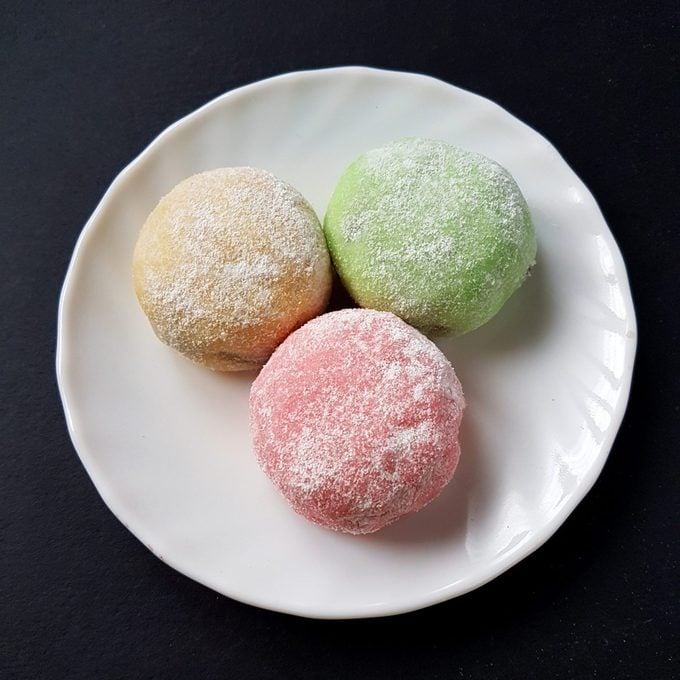 didoi/Getty Images
didoi/Getty Images
Mochi Ice Cream
Mochi ice cream is a popular Japanese dessert made with a sweet rice dough wrapped around ice cream. To make mochi ice cream at home, pick your favorite ice cream flavors—perhaps strawberry, vanilla or chocolate—and wrap a small scoop in mochi dough. The toughest part is waiting for them to freeze completely before taking a bite! Next, try our favorite
mochi doughnuts.
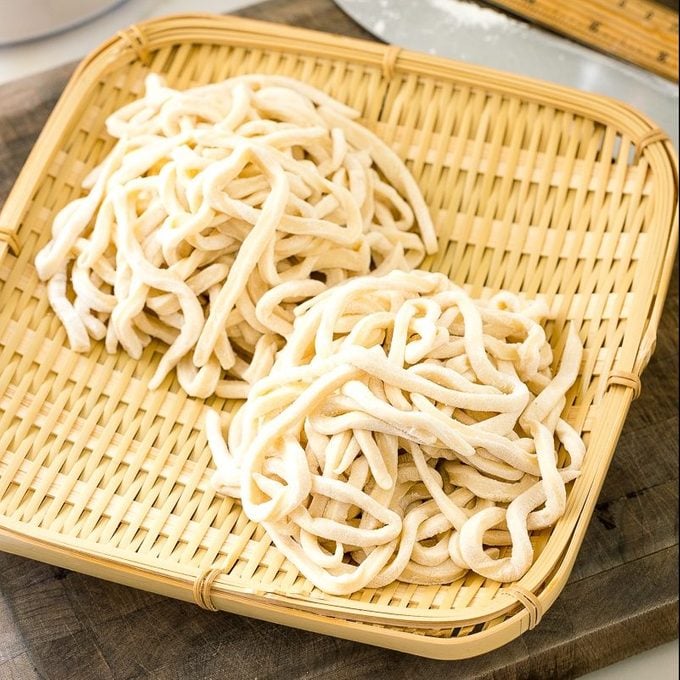 courtesy just one cookbook
courtesy just one cookbook
Udon Noodles
Like any handmade noodle,
making udon noodles from scratch is better than store-bought, says Namiko Hirasawa Chen in
Just One Cookbook. While it's more labor intensive,
making fresh udon noodles with pantry ingredients like flour, salt and water is worth it for the distinct chew and bounce. Enjoy them cold with dipping sauce, warm in a pan-fried noodle dish or hot with a brothy soup.
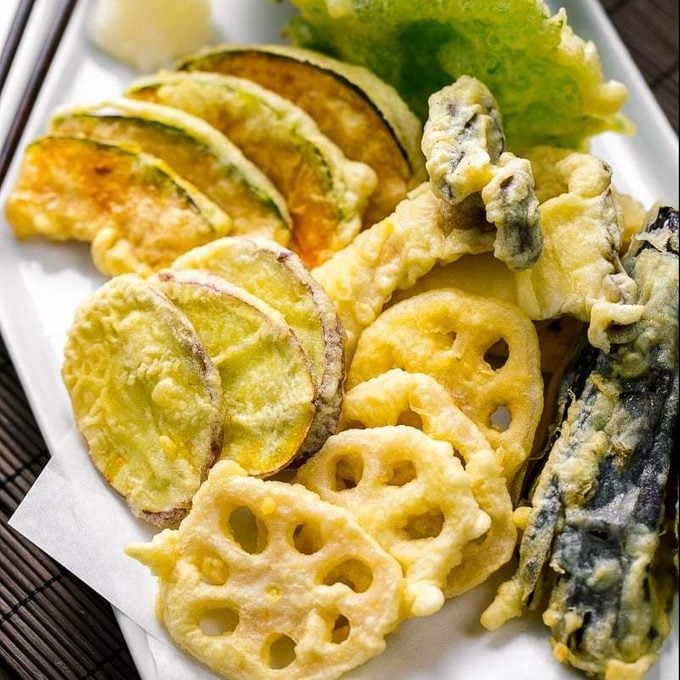 courtesy just one cookbook
courtesy just one cookbook
Tempura
Tempura is battered and fried vegetables or seafood. Unlike the crunchy batter of fried chicken, tempura is light and less oily (and still crisp!), pairing perfectly with a dipping sauce. Some common vegetables used for tempura include broccoli, sweet potatoes, mushrooms, squash and eggplant, and they're often served alongside
shrimp tempura. Once you chop your vegetables and seafood, dipping and frying is quite quick. You'd be surprised how easy it is to make tempura.
 courtesy just one cookbook
courtesy just one cookbook
Omurice
This American-inspired comfort food is made from a silky egg omelette served with rice and ketchup. The
omurice is soft and silky because it's cooked on low heat. As long as you master the silky omelette, you can make the rice however you like it. Try adding ham, onion or peas to the rice, or pour on more ketchup for maximum flavor.
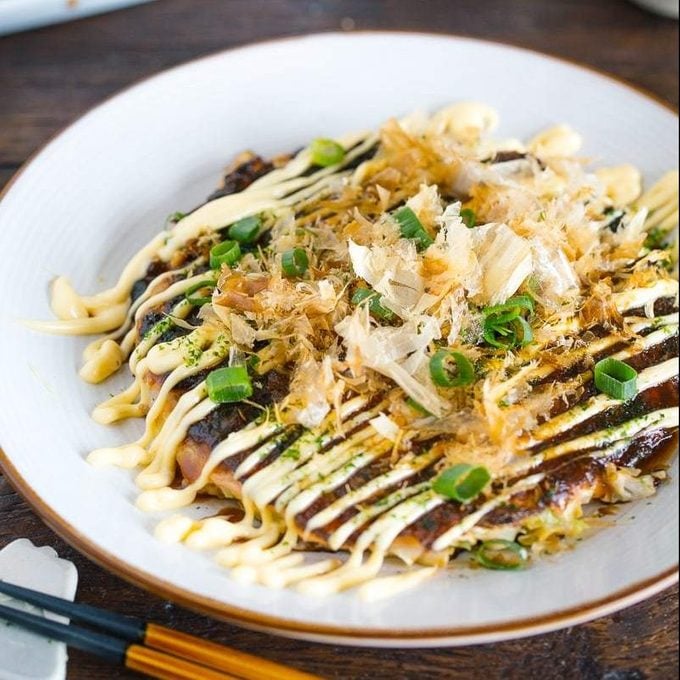 courtesy just one cookbook
courtesy just one cookbook
Okonomiyaki
Okonomiyaki is a Japanese street food from Osaka, similar to a cabbage-based frittata. Namiko of
Just One Cookbook typically makes hers with an egg batter, cabbage and pork belly or bacon. It's topped with a savory okonomiyaki sauce,
Japanese mayonnaise, furikake and bonito flakes.
When you make
okonomiyaki at home, though, you don't need to use all of these ingredients, and it can come together in the time it'd take you to make a frittata! Just use the vegetables and toppings of your choosing and make sure you focus your attention on the egg.
